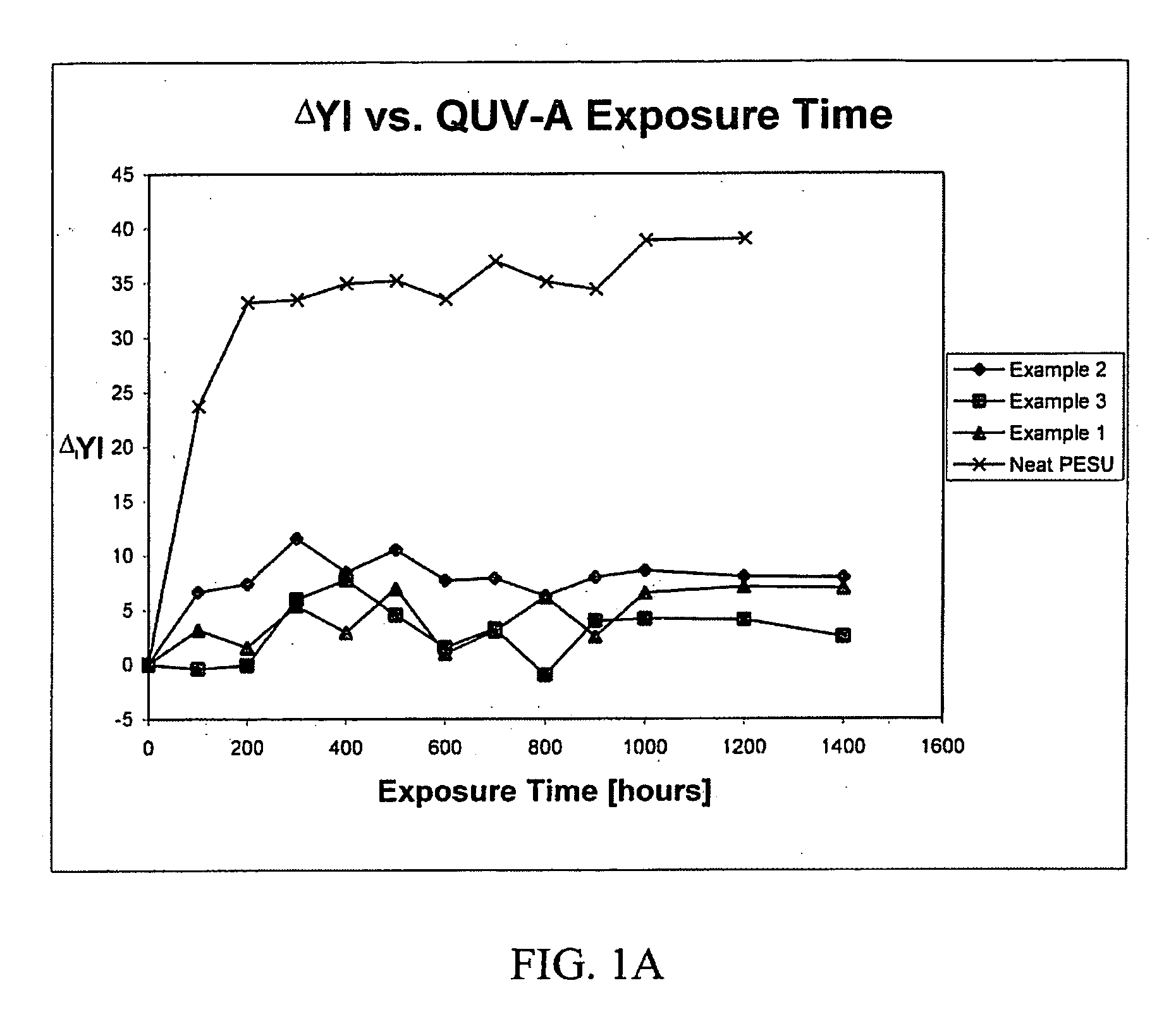Ultraviolet protected polyethersulfones
a technology of ultraviolet protection and polyethersulfone, applied in the field of ultraviolet protection polyethersulfone, can solve the problems of inability to apply materials to polyethersulfones, coloration, embrittlement or yellowing of articles, and deterioration of articles, etc., and achieve the effect of improving the durability of materials and reducing the number of defects
- Summary
- Abstract
- Description
- Claims
- Application Information
AI Technical Summary
Benefits of technology
Problems solved by technology
Method used
Image
Examples
example 1
[0024] Example 1 demonstrates a UV protected polyethersulfone comprising a benzoxazinone-based UV absorber, diphenylacrylate-based UV absorber, and HALS
TABLE 5Example 2Weight%Ingredient7UV absorber, sold under the trade name of CYASORB UV-3638by Cytec Industries Inc. Benzoxazinone-based UVabsorber0.2HALS, sold under the trade name of Lowilite 94 by Great LakesChemical Corporation92.8Polyethersulfone, sold under the trade name of RADEL A bySolvay Advanced Polymers - USA.
[0025] Example 2 demonstrates a UV protected polyethersulfone comprising a benzoxazinone-based UV absorber and HALS.
TABLE 6Example 3Weight%Ingredient10UV absorber, sold under the trade name of CYASORB UV-3638by Cytec Industries Inc. Benzoxazinone-based UVabsorber0.3HALS, sold under the trade name of Lowilite 94 by GreatLakes Chemical Corporation89.7Polyethersulfone, sold under the trade name of RADEL A bySolvay Advanced Polymers - USA.
example 3
[0026] Example 3 demonstrates another composition of UV protected polyethersulfone with a benzoxazinone-based UV absorber and HALS.
Ultraviolet Resistance Results
[0027] The materials described in Examples 1, 2 and 3 and a sample of pure polyethersulfone were tested for changes in their optical properties, namely changes in the yellowness index (ΔYI) and changes in the luminous transmittance (ΔLT), due to UV radiations from a QUV-A source, a QUV-B source, and a Xenon arc The degree of degradation in transparent thermoplastics may be estimated by the change in the yellowing index (ΔYI) of a material. This may be done by weathering tests as defined in “Srandard Terminology relating to Natural and Artificial Weathering Tests of Nonmetallic Materials” (ASTM G 113-01).
[0028] The changes in luminous transmittance, which is the ratio of the luminous flux transmitted by a body to the flux incident upon it as defined in the standard ASTM D1003-00, may serve as another index for estimating d...
PUM
| Property | Measurement | Unit |
|---|---|---|
| thickness | aaaaa | aaaaa |
| polymeric composition | aaaaa | aaaaa |
| concentration | aaaaa | aaaaa |
Abstract
Description
Claims
Application Information
 Login to View More
Login to View More - R&D
- Intellectual Property
- Life Sciences
- Materials
- Tech Scout
- Unparalleled Data Quality
- Higher Quality Content
- 60% Fewer Hallucinations
Browse by: Latest US Patents, China's latest patents, Technical Efficacy Thesaurus, Application Domain, Technology Topic, Popular Technical Reports.
© 2025 PatSnap. All rights reserved.Legal|Privacy policy|Modern Slavery Act Transparency Statement|Sitemap|About US| Contact US: help@patsnap.com



